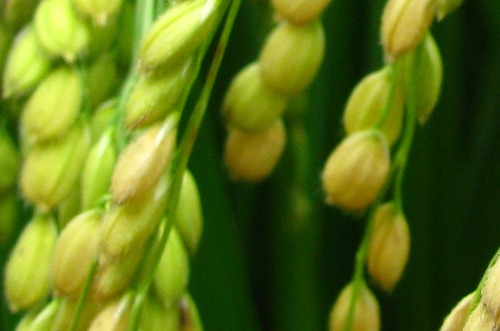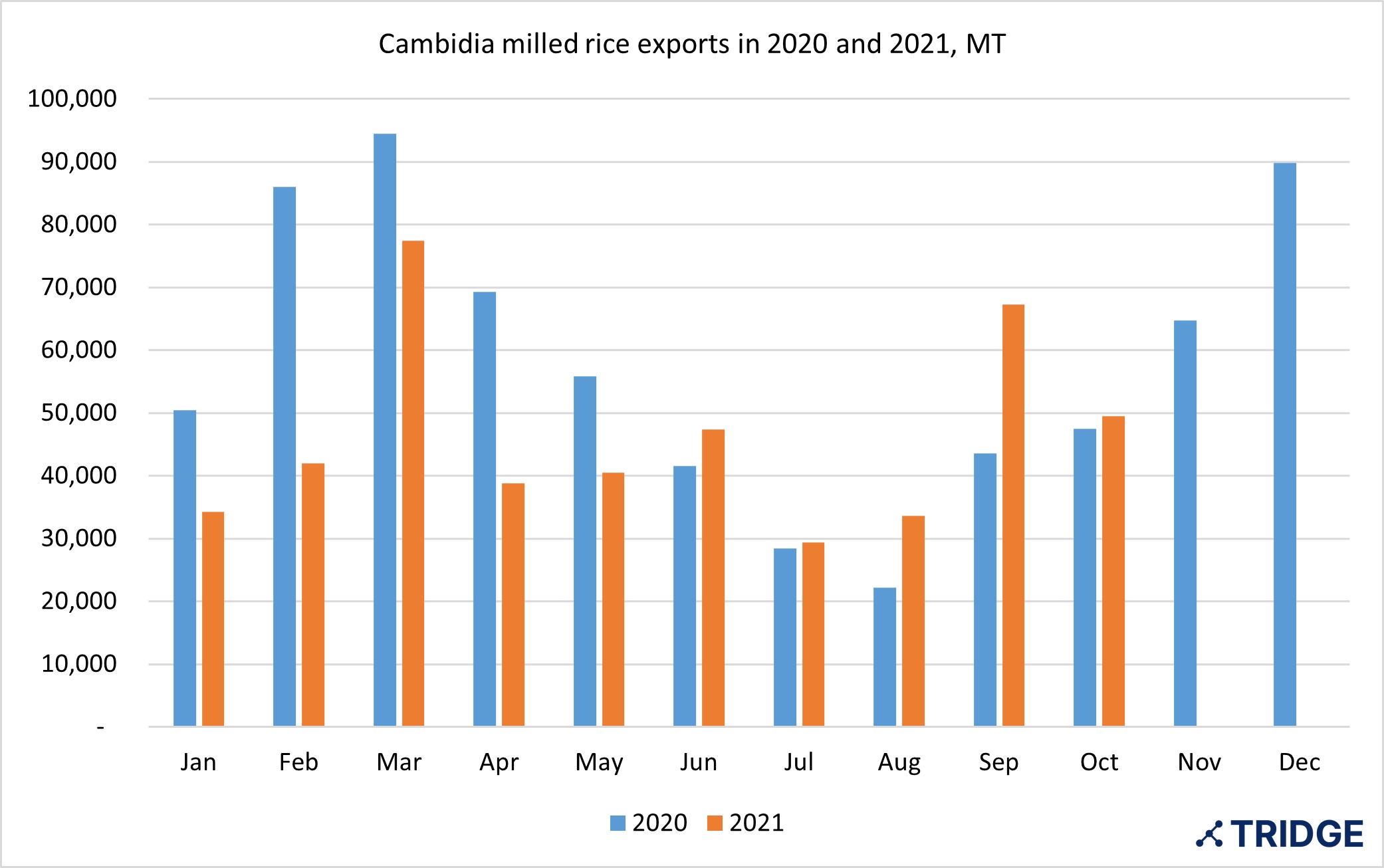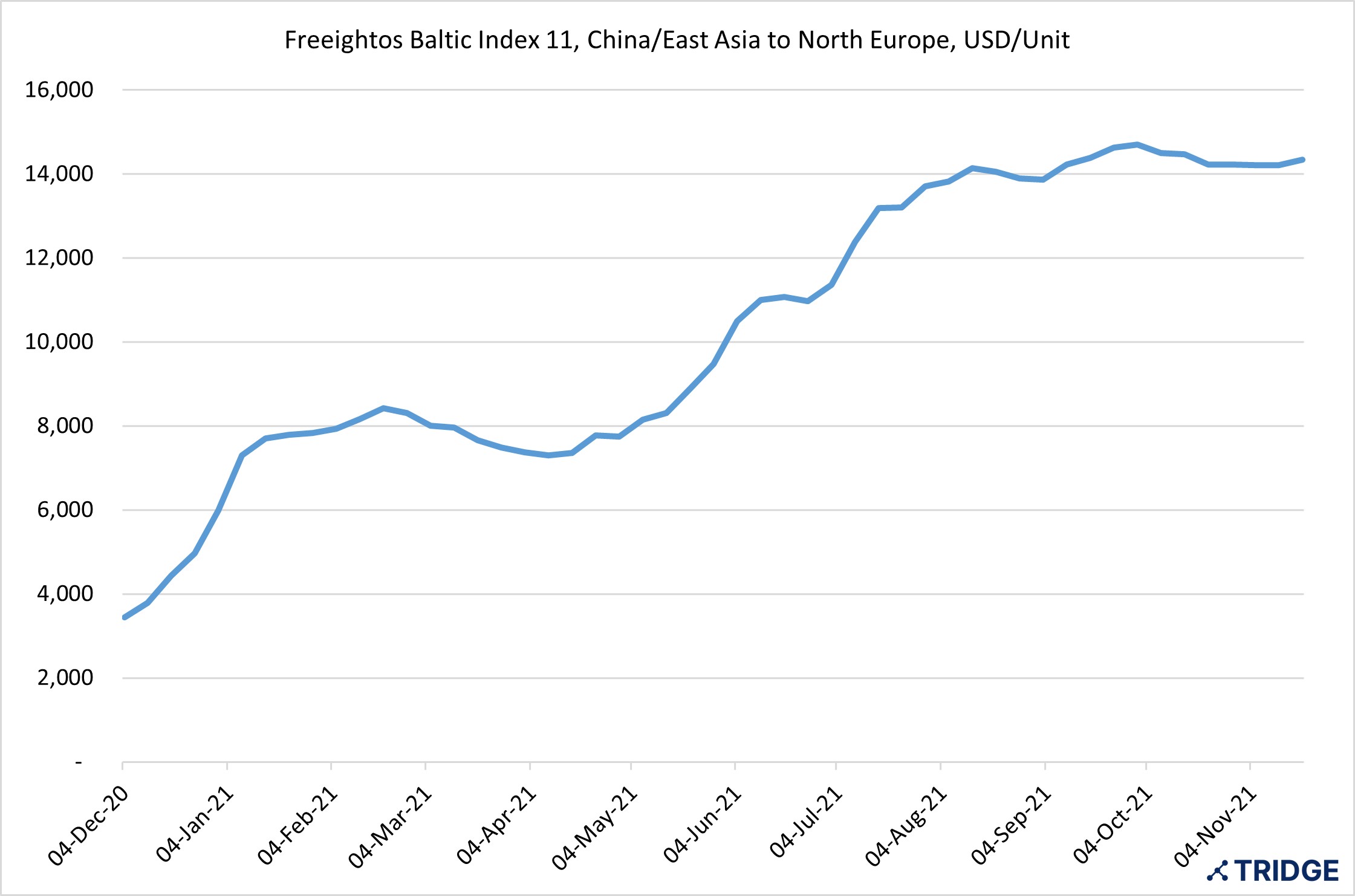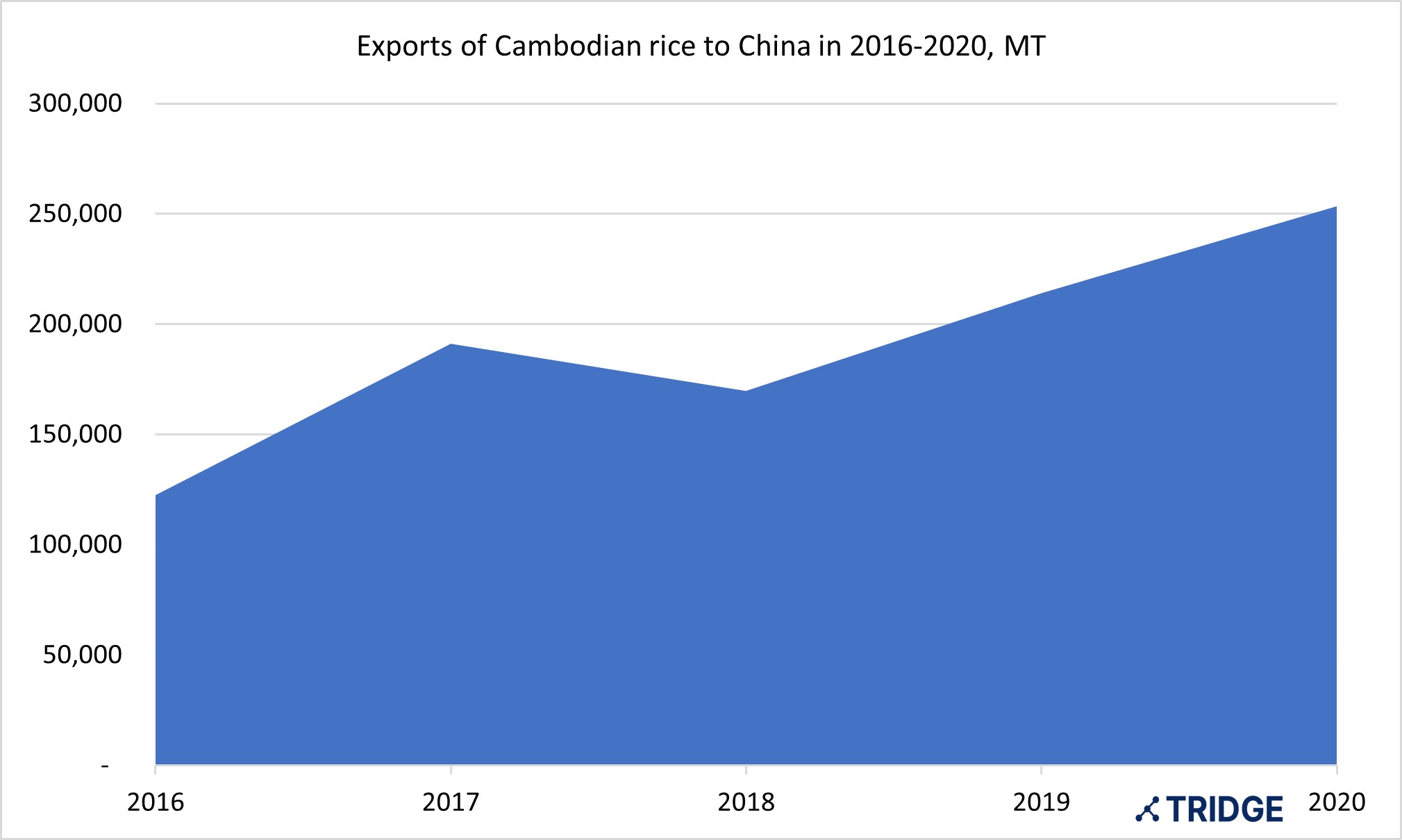Cambodian rice ‘swings’: milled rice exports decline, while husked rice exports surge in 2021

The Cambodian milled rice exports have been thriving in the last four years, with the volumes of shipments constantly increasing due to rising global consumption. However, in 2021 local milled rice exporters have been experiencing quite a depressing season, as shipments from the country were showing pessimistic figures straight from the first month of the year. In January 2021, Cambodia’s milled rice export volumes were 34,273 tons, which is 32% less than in January 2020. A drop in exports is associated with lower production towards the end of 2020 due to severe floods in the country.

Source:Cambodian Rice Federation
The downtrend had prevailed in the first half of 2021, with the country’s traders struggling from the outcomes of port bottlenecks caused in Asia, the EU, and the USA. This has been also reflected in the Cambodia rice export sector, as one of the main destinations of the country’s milled rice is the EU countries. Port disruptions and congestions, together with the resumption of economic activities all over the world after COVID, have resulted in container shortages. Lack of containers has caused a surge in freight rates, which started from the end of 2020. The Cambodian Rice Federation shows that at the end of the first quarter of 2021, the rate for 20 feet containers for exports from Southeast Asia to North Europe rose to $8,000/unit, which is 5.5 times more than in the same period last year. The freight rate for a 40-foot container jumped from $2,500/unit at the end of the first quarter in 2020 to $10,000/unit in the same period in 2021 and although this is not the kind of container usually used for rice exports to Europe, it does illustrate the freight rate price movement.
The Freightos Baltic Index (FBX 11) shows the ocean freight cost of 40-inch container shipment from China/East Asia to Norther EU countries exceeded $3,525/unit as of 2 December 2020, whereby a month later the freight rate had almost doubled reaching $6,992/unit. Since then, the rate has been constantly increasing and on 15 November 2021, the FBX 11 was $14,267/unit.

Source: Macromicro.me portal, Freightos Data
Higher logistics costs are decreasing the competitiveness of Cambodian rice on the international market compared to such giants as Pakistan and India, whose export price offers are lower than the Cambodian ones.
In addition to logistic issues, the export of Cambodian rice exports in 2021 has also been constrained by duties introduced by the EU since January 2019 for safeguarding reasons. Because the EU accounted for 30% of total rice exports from Cambodia in 2020, this market is of high importance for the country. According to data of the Cambodian Ministry of Agriculture, milled rice exports in the first ten months of 2021 to the EU stood at 115,000 tons, down 32% year on year. The duty tariff applied on Cambodian-origin rice was set for three years and started at the rate of €175($200)/MT in 2019 then decreased to €150($170)/MT in 2020 and hit €125($140)/MT in 2021.
The decrease in rice deliveries to the EU has been partially offset by higher shipments to China. Exports of this cereal from Cambodia to China have been increasing steadily in the last five years. In 2021, this trend has continued its upward movement. Over a period of 10 months in 2021, China imported around 230,000 tons of milled rice from Cambodia, 18% up year on year amid high domestic demand.

Source:ITC Trade map
Unlike the situation with the shipments to the EU, China was able to provide containers to Cambodia, which secured a continuous flow of goods between the countries. Cambodia is also reaping the benefits of the free trade agreement signed between two states in October 2020, which allows for 400,000 tons of Cambodian rice to enter China without levied duties.
Not all rice exports are recorded
Although the export of unhusked or in other words paddy rice from Cambodia is not officially recorded, it is worth paying attention to this commodity, for its shipments have brought the national economy more than $430 million in January-September 2021. Paddy rice is exported mostly to Vietnam. According to the estimates of the Cambodian Ministry of Agriculture, Vietnam bought 2.54 million tons of paddy rice from Cambodia in the first nine months of 2021, showing an 81% increase year on year. The key factor behind such a leap is persistent domestic demand in Vietnam, as local paddy production was decreasing. In addition, due to the lack of rice processing capacity in Cambodia, the country must sell the excess amounts abroad.
Sources:
PhnompenhpostPaddy exports surge as milled rice sales falter
PhnompenhpostMilled-rice exports surge 43% in Jul-Sept
Cambodia Rice FederationChina remains the biggest Cambodian rice export’s market
PhnompenhpostKingdom exports 536K tonnes of rice in Jan-Oct
Phnompenhpost2020 rice exports nearly 3.6M tonnes
KhmertimeskhCambodia exports over 460,000 tonnes of milled rice in 10 months
European CommissionEU imposes safeguard measures on rice from Cambodia and Myanmar
KhmertimeskhRice exports fall 14 percent even as overall agriculture shipments rise
FAS USDA November 2021 Grain Report
ASEAN BriefingCambodia Ratifies Free Trade Agreement with China
Acclime CambodiaCambodia concluded its bilateral free trade agreement with China